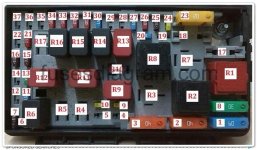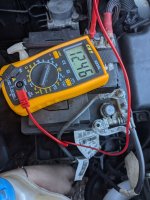If the battery is totally disconnected, there will be a small spark for some milliseconds when reconnecting it, that's normal. This spark shouldn't cause any harm.
However, nobody said you should disconnect the battery. The idea was to connect the jump starter cable to the negative pole, leaving everything else in place.
Also, don't leave ignition on whilst disconnecting your battery or playing around with the jumper cable (unstable connection). This
might cause damage.
Luckily, looks like your car doesn't have start-stop. Start-stop cars have AGM batteries and a voltage regulator connected to the negative terminal (it's not the voltage regulator of the alternator, it's a special regulator for start-stop). These special voltage regulators need to be treated very carefully.
Did the engine finally crank or not?
If not, with ignition off, reconnect the negative terminal of the battery with the car's negative clamp using
battery clamp grease on the battery terminal (a special type of conductive gel which will prevent corrosion of the terminal and help increase conductivity) and add the jumper cable as a second connection between battery negative and engine block. Crank it again.
You could also clean the positive terminal and apply some battery clamp grease to it.
Hope this helps.





